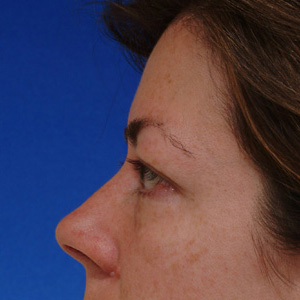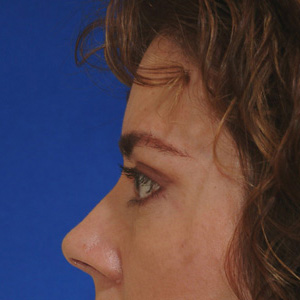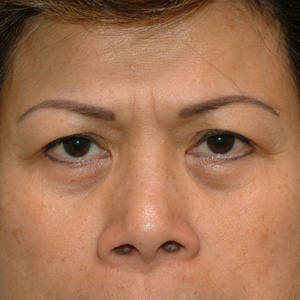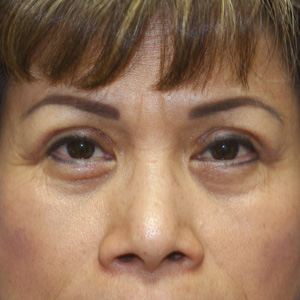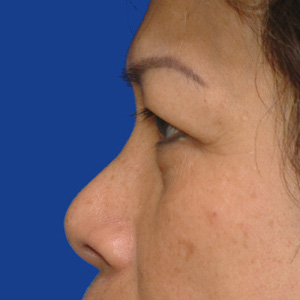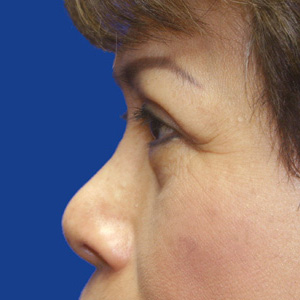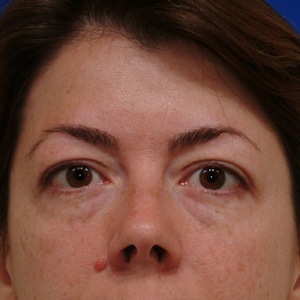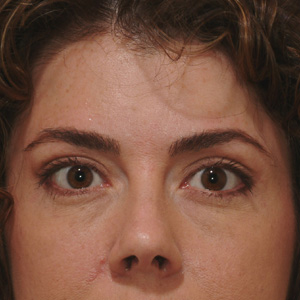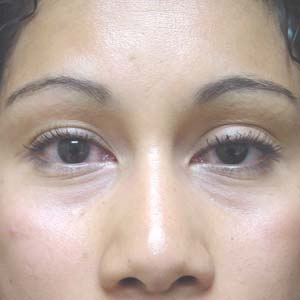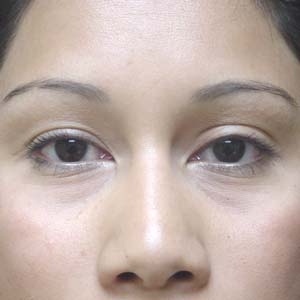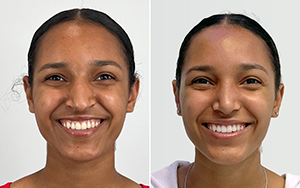Upper Eyelid Surgery Consultation
Consultation and Physical Exam
- Upper Eyelid Surgery Overview
- Upper Face Rejuvenation
- Are You a Good Blepharoplasty Candidate?
- What Do You Want to Change?
- Benefits of Upper Eyelid Surgery
- Joseph T Cruise, MD’s Blepharoplasty Philosophy
- Consultation and Physical Exam
- Prior to Upper Eyelid Surgery
- Blepharoplasty Anesthesia
- After Upper Eyelid Surgery
- Recovery from Upper Eyelid Surgery
- Possible Blepharoplasty Complications
- Blepharoplasty Cost and Financing
- Upper Eyelid Surgery Words to Know
- Upper Eyelid Surgery Before and After Pictures
We have outlined below what you can expect from your upper eyelid surgery consultation. Read carefully, as there are many suggestions that will save you time, clear up questions, and help you convey to your plastic surgeon what it is you want to accomplish.
- Health History
All cosmetic surgery consultations begin with a thorough health history. This is especially true if general anesthesia is being used but also applies to local anesthesia. Prior to meeting with the plastic surgeon you will be given a health history questionnaire. There are five areas of your health you will be asked about. Be sure to answer it with detail so that your surgery and anesthesia can be optimized for you.
- General Health
General health problems are important to discuss so that your surgery is as safe as possible. Be sure to mention any chronic illness. Of particular concern are high blood pressure, diabetes, heart problems, liver and kidney disease, stroke, cancer, bleeding problems, and wound healing problems.
What will Joseph T Cruise, MD do if I have medical problems?
In short, he will make sure your health is optimized as much as possible to ensure your safety. This may mean referring you to your private physician.
If you have a health problem or are you can often save yourself time by getting a letter from your private physician prior to your cosmetic consultation stating what the problem is, how it is being treated, and whether or not you are able to tolerate general anesthesia safely.
If you are seeing any specialist (cardiologist, kidney doctor, psychiatrist, etc. ) be sure to bring a letter from them stating you are able to tolerate surgery.
If you are not able to tolerate general anesthesia it may be possible for your procedure to be done under local anesthesia. This must be discussed with your plastic surgeon.
- Past Surgical History
On your questionnaire you will be asked about previous surgeries. Be sure to identify any problems you may have had with anesthesia. Of particular concern are previous cosmetic surgeries especially if you do not like the result and are interested in revision.
- Medications
Be sure to list all medications including aspirin and over-the-counter medications. These are important as they may increase bleeding and affect your surgery. It is extremely important to stop taking aspirin and aspirin containing products at least 10 days before surgery. Tylenol is a good alternative. Here is a partial list of aspirin containing products and other products to be avoided prior to surgery.
- Allergies to Medications
Information about medications that cause allergies is very important so that these medications can be avoided. Of particular importance is the reaction you had, especially if you had trouble breathing. Be sure to include this information! Nausea is not an allergy but it is important to mention as well.
- Smoking, Drinking and Drug Use
These there will certainly affect your surgery and MUST be mentioned so that your surgery can be optimized. Smoking causes a profound decrease in wound healing and will lead to worse scarring and a less favorable result. With large procedures such as a face lift, neck lift, tummy tuck, and breast lift smoking must be stopped at least 3 weeks before and after surgery. Otherwise, the results could be disastrous leading to non-healing wounds, poor scarring, and/or infection. With smaller procedures such as eyelid surgery, nose surgery, breast augmentation, and liposuction smoking will hurt the overall result but this may or may not be noticeable. In this case smoking cessation is strongly advised but is not mandatory.
During your consultation you must be very accurate with your eye problems. These include glaucoma, lazy eye, retinal problems, and cataracts. Of particular concern is Dry Eye. Dry eye is characterized by frequent blinking, red eye, itching and burning. It is important because it can made worse by eyelid surgery especially if proper measures such as canthopexy or canthoplasty are not taken.
Patients with thyroid disease must be particularly careful with eyelid surgery as it can cause dry eye and/or persistent swelling if it is not controlled. Therefore, it is important to bring documentation of your last thyroid function test to your consultation as this will be a requirement prior to surgery.
- Eyebrow Position
The upper eyelid exam starts with evaluating eyebrow position. There are two main characteristics to look at. These are demonstrated in the picture below. The first one is the most important; the relationship of the medial brow to the lateral brow. The lateral brow should be at the level of or higher than the medial brow.
Two, the brow should be at the level of the orbital rim in men and 1/4 inch above the orbital rim in woman.

Notice that the lateral portion of the eyebrow is well above the level of the medial eyebrow.
Eyebrow position has a dramatic effect on the appearance of the eye region. Elevating the lateral brow creates an elegant, youthful look. During your consultation, Joseph T Cruise, MD will elevate your lateral brow with his fingers to get an idea how much laxity is present and, or course, to see what you would look like with it elevated. You can do this yourself. Simply elevate the temple region gently.
|
Usually, a formal brow lift is not necessary. Joseph T Cruise, MD can often obtain lateral brow elevation by combining the upper blepharoplasty with a temperal brow lift. This requires a small incision right at the hairline of the temple. |
Notice the dramatic effect of elevating the lateral brow. |
- Excess Skin and/or Fat of the Upper Eyelid
Skin. This is what most patients complain about because it is the most obvious. With age, excess fat/skin will result in a loss of vertical height of the upper eyelid leaving an eyelid that is not capable of makeup application. Sometimes, the redundancy is so pronounced that the skin drapes over the eyelid and can impair vision especially when looking upward. Skin excess occurs in just about everyone with age.
Fat.
There are two types of fat that are routinely removed by plastic surgeons during an upper blepharoplasty. The most obvious fat is the fat that you can pinch between two fingers. This fat descends from the brow area with age. Usually it is quite thick and located just below the lateral eyebrow.
The second fat is deeper. It normally lies along side the eyeball itself. With age, it tends to bulge outward. It is very common in Asians.
|
Both types of excess fat are present in this 47-year-old female. |
Here one can clearly see the thick fat just below the lateral eyebrow. This fat once lived at or above the eyebrow level. |
Proper evaluation can determine the two different types of fat. Regardless, it is often necessary to remove both types in order to clean up the upper eyelid. Once again, there was a time when plastic surgeons routinely removed all this fat but this is no longer the case. Complete removal can lead to a hallowed out appearance especially toward the nose. If you look at an adolescent, you will see plenty of fat. Fat is youthful and must be removed only as needed.
Asians typically require a more aggressive fat removal. With them, almost all the fat is removed to achieve the desired result.
- Sagging Lateral Canthus
This is one problem that many plastic surgeons fail to recognize and treat. Joseph T Cruise, MD began elevating the lateral canthus early is his career and noticed such an elegant result that he began performing it routinely.
38-year-old female with descended lateral canthus and lateral eyebrow
He found that it is especially useful on patients with lax lower eyelids or patients with a downward tilt of the eye. In youth, the lateral canthus is 2-3mm higher than the medial canthus. This is exemplified in the picture of the ideal eyelid above. As we age, this elevation is lost resulting in what many call a hound dog appearance.
Below is an anatomic depiction of the descent of the lateral canthus.
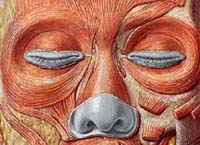
Youthful Eyes. Muscles around the eyes are circular in shape.
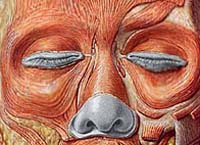
Aged Eyes. Notice the drooping of the eye brow and lateral canthus
Below is a excellent clinical example and treatment of a patient with descended lateral canthus creating hound dog appearance. Notice how this is usually also associated with a descended lateral eyebrow.
- Eyelid Ptosis
This is another upper eyelid problem that many plastic surgeons fail to diagnose and treat. Eyelid ptosis simply means that the upper eyelid sags. In cosmetic patients the most likely causes is 1) The upper eyelid fat is pushing it down. Here fat removal will take care of the problem or 2) The muscle attaching to the upper eyelid has torn. This is more complicated to treat but still can easily be done at the same time as an upper blepharoplasty.

Normally, the upper eyelid sits well above the pupil.
With eyelid ptosis, the upper eyelid falls to the level of the pupil. This gives a tired appearance and increases the vertical height of the eyelid on that side. People notice the asymmetry. Sometimes both sides have ptosis and, therefore, the asymmetry is not as noticable but the eyes appear almost shut.
26-year-old female complains that her left eye(right side of picture) was lower than her left. Notice how the left upper eyelid touches the pupil, whereas, the left eye is wide open and bright. Also notice difference in eyelid height. AFTER shows both lids at the same level and similar eyelid height
- Typical Incisions
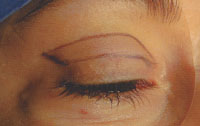
The amount of skin removal depends on the amount of excess skin present. Here is a typical upper blepharoplasty excision. The end result is a straight line the becomes almost impossible to see after 3-4 months.

